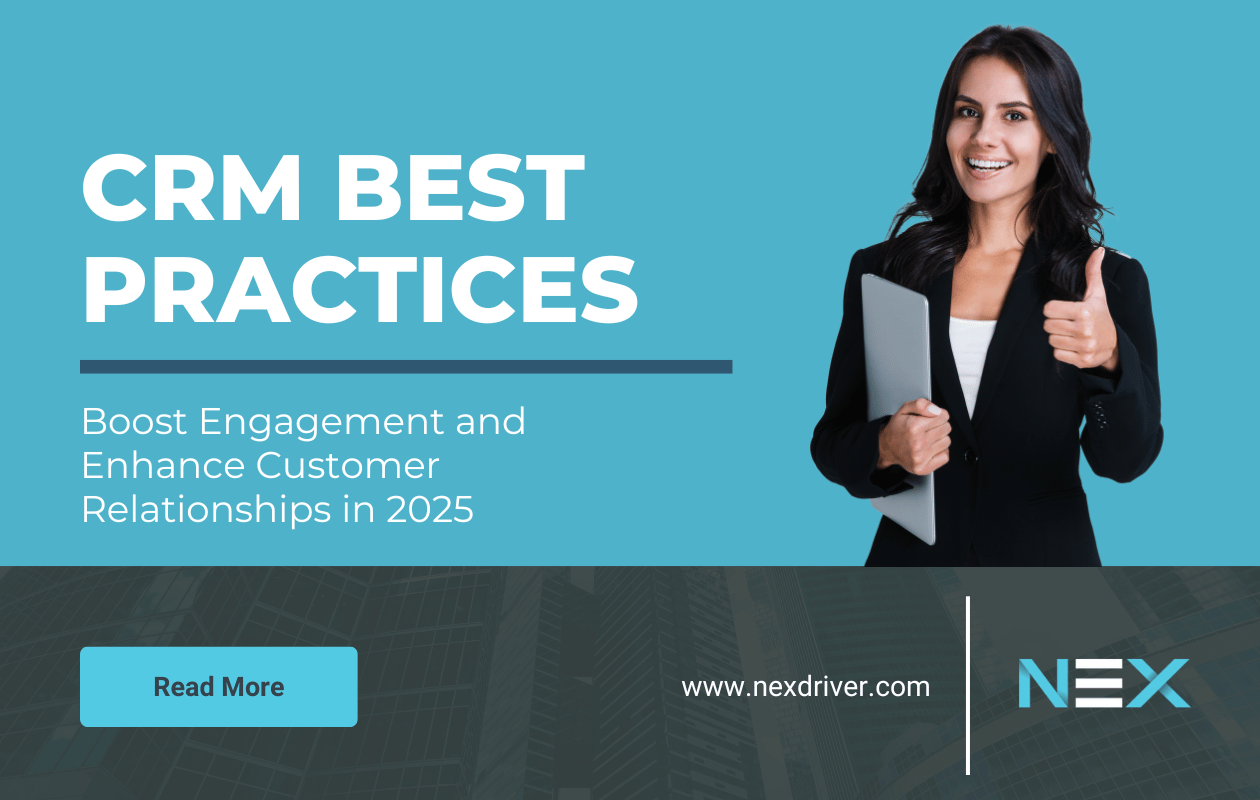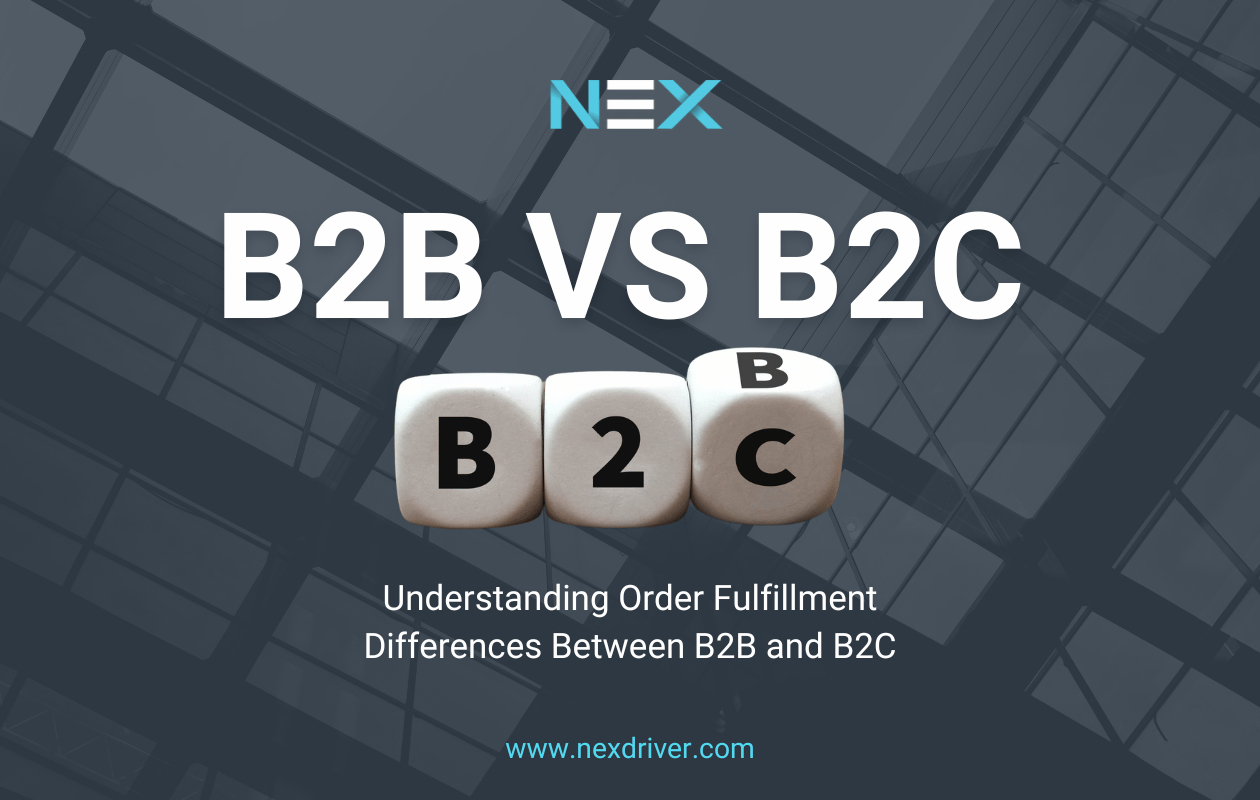How to Choose the Right Enterprise Management Software: Key Factors to Consider
Choosing the best enterprise management software can dramatically streamline your business process, enhance data accuracy, and improve collaboration...
14 min read
Admin : Jan 30, 2025 11:51:36 AM

A well-structured Customer Relationship Management (CRM) system helps teams gain deeper insight into customer data, streamline the sales process, and maintain meaningful connections that drive repeat business. Professionals who prioritize CRM implementation can see higher customer retention rates and more predictable revenue streams because they use CRM software to collect, manage, and analyze interactions efficiently.
This article explores why adopting CRM best practices to boost engagement is crucial in 2025, how aligning customer relationship management strategies with specific business processes can elevate sales performance, and what tactics can lead to a successful CRM implementation.
A CRM solution delivers the most significant benefits when there is clarity on precisely what the organization wants to accomplish. Leaders who choose a CRM without defining goals often struggle to quantify its impact, resulting in scattered strategies and inconsistent sales outcomes. Identifying well-structured objectives at the outset ensures the CRM system aligns with business needs, making it easier to refine data entry practices, guide sales reps, and execute effective CRM automation. Professionals seeking to optimize their sales pipeline and improve overall customer service should begin by clarifying the purpose of the CRM software, focusing on measurable targets that promote steady expansion.
Companies that invest in a CRM platform often emphasize new customer acquisition. However, setting impractical goals can strain resources and lead to haphazard marketing campaigns that don’t deliver results. A best practice is to determine specific metrics, such as conversion rates, pipeline velocity, and the average deal size, that match the priorities of sales teams and marketing efforts. Clear benchmarks enable each department to adjust strategies and optimize CRM data insights as they track sales outcomes. When acquisition targets remain realistic, professionals can use the CRM to ensure that any initiative to gain new customers stays aligned with available resources and team capacities.
Although attracting new clients is important, focusing on existing relationships is often the more cost-effective strategy. An effective CRM implementation supports retention by highlighting past purchase histories, customer preferences, and areas of improvement in account management. Another CRM best practice includes segmenting satisfied customers and rewarding them with exclusive offers or loyalty programs, which can reduce churn and strengthen trust. Sales reps can gather insights from your CRM to craft personalized outreach that resonates with valuable clients, while marketing teams can integrate your CRM into email marketing automation, ensuring timely follow-ups that keep the customer engaged. When teams consistently monitor retention goals in the CRM, they can quickly adapt approaches to reinforce loyalty and expand opportunities with long-term customers.
Every stage of the buyer journey, from initial awareness to final decision, benefits from precise objectives that guide your sales process. When implementing a CRM, it’s vital to outline measurable targets at each stage, such as qualified leads generated, pipeline progression, or closed deals. This clarity helps align marketing efforts with the sales cycle, keeping all departments on the same page regarding the handoff between lead generation and active selling. It also fosters a data-driven culture, enabling the team to refine your CRM usage and track sales metrics with precision.
Maintaining reliable customer data is central to every successful CRM best practice. If databases are cluttered or disorganized, it becomes challenging to extract actionable insights or assess sales performance accurately. Quality data in a CRM software solution also enhances the effectiveness of marketing automation by ensuring that teams only engage with relevant leads. A robust approach to data management involves setting strict standards for data entry, centralizing customer records, and regularly cleaning outdated information so the CRM can help drive better decisions.
Many organizations struggle with scattered customer data spread across spreadsheets, emails, or fragmented databases. An effective CRM system helps solve this by pooling everything into a centralized hub that offers role-based permissions for security. When the entire sales team and marketing professionals use CRM systems with a single source of truth, they can quickly locate client histories, track sales interactions, and spot opportunities for upselling or cross-selling. This unified view of customer relationship management activity also empowers customer service agents to respond more effectively, as they can see every interaction or purchase in one place.
After creating a CRM structure that gathers customer information in one place, the next step is ensuring that the data remains clean and accurate. Regularly scheduled audits help eliminate outdated entries, correct incorrect details, and remove duplicates that might skew reporting. CRM automation tools can also be configured to flag missing fields or highlight anomalies, making it easier for teams to maintain high-quality data without manual checks. When the CRM system contains up-to-date and verified customer data, professionals can invest in a CRM strategy that truly reflects real-world trends, resulting in sharper marketing campaigns and more targeted outreach.
Lack of uniformity in data entry leads to confusion, miscommunication, and a drop in the effectiveness of your CRM. To avoid these issues, it’s crucial to develop a set of guidelines that specify how various fields should be filled out, how naming conventions must be used, and which mandatory fields are required. For example, a best practice might be to define consistent abbreviations for states or regions, standardize phone number formats, or mandate that certain data fields are never left blank. Training sessions that focus on these guidelines help employees understand why consistency matters. This approach also encourages accountability and ensures that your CRM remains a valuable tool rather than a jumbled record repository.
Many top CRM strategies center on delivering personalized content that resonates with individual interests or segments. In 2025, customers expect messages that show a genuine understanding of their preferences, whether you choose a CRM to improve emails or create a CRM approach to refine social media campaigns. Personalization is not just about greeting a contact by name but using data-driven insights to tailor communication based on specific interests and historical buying patterns. This form of customer relationship management fosters deeper loyalty and increases the likelihood of a lead progressing through your sales funnel.
One of the benefits of a CRM—especially when integrated with marketing automation or website analytics tools—is the ability to capture behavioral data, such as pages visited, product categories explored, and time spent on specific landing pages. These insights from your CRM can help sales reps and marketing teams craft messages that address the specific concerns or motivations of different audiences. For instance, if a lead repeatedly views a particular product, an automated email marketing sequence can highlight features that might spark immediate interest. This form of personalized interaction often leads to more valuable conversations and greater trust, proving that the organization understands the lead’s individual needs.
Organizations can benefit from CRM solutions that allow dynamic segmentation according to spending levels, buying frequency, or product categories. A segment of customers who frequently purchase certain items might respond well to cross-selling or up-selling campaigns, while first-time buyers might benefit from a welcome series that introduces them to related offerings. This customer-centric approach also enables more strategic use of resources, as marketers can focus on segments that promise the highest ROI. When personalization aligns with specific consumer habits, the message has a better chance of hitting the mark.
Timing plays a critical role in a successful CRM implementation. Trigger-based messaging, set up within the CRM platform, ensures that teams automatically follow up when a certain action is taken or a preset time has elapsed. If a lead abandons their online cart, for example, the system might send an automated reminder or special incentive. This approach keeps potential customers engaged without requiring constant human intervention. Automation also prevents leads from slipping through the cracks, as the CRM tool consistently reminds the sales team when a critical interaction is due. With quick responses and targeted messages, organizations demonstrate attentiveness, a factor that greatly influences client satisfaction.
An advanced CRM that includes cloud-based technology makes it easier to align sales, marketing, and customer service functions without extensive hardware investments. Cloud solutions also foster collaboration because authorized users can access the system from any device. This heightened efficiency saves time and boosts productivity, giving the team a chance to focus on strategic activities that improve sales or marketing outcomes.
Before choosing the right CRM software, many businesses review the platforms they already use and see how easily those can integrate with the new solution. Accounting tools, project management systems, and email service providers often share data with the CRM if proper APIs or connectors are available. When you integrate your CRM in a way that automatically passes information back and forth, you reduce redundant data entry and minimize errors. A synchronized environment means that sales reps and marketing professionals can evaluate client billing histories, check support tickets, or monitor campaign engagement in one consolidated space. Such interoperability is vital for shaping well-rounded customer experiences.
A forward-looking CRM system helps companies accommodate business growth without frequent platform overhauls. Leaders can refine their CRM usage by choosing a solution that supports additional users, expanded databases, or specialized modules for complex tasks. Cloud-based architecture often offers flexible pricing models and near-instant scalability, which is particularly useful if the sales team rapidly expands or if marketing campaigns generate a surge of new leads.
Maintaining reliable operations in a CRM system ensures that users can access critical customer data and track sales consistently. Many cloud CRM software solutions invest in backup environments so that, in the event of a system failure or unexpected downtime, users can immediately switch to a secondary instance. This best practice enables teams to handle critical tasks, such as customer support and urgent sales opportunities, with minimal disruption. Real-time monitoring tools also help detect performance issues early, preventing small problems from escalating into extended outages. Such redundancy is essential for organizations that rely on CRM platforms to coordinate tasks around the clock.
Improving sales performance often involves refining how leads progress through the sales funnel, and an effective CRM system helps deliver precisely that visibility. Sales pipeline metrics inform managers about the health of deals, potential bottlenecks, and overall revenue expectations. Clear workflows in the CRM can outline responsibilities at each stage, integrate your CRM with notifications or dashboards, and guide teams toward the right next steps. This clarity reduces confusion about who should follow up when making it easier to track sales across different departments.
Effective CRM implementation involves breaking down the funnel into clearly labeled stages, such as prospect, qualified lead, proposal, and closed deal. Each label should have a clearly defined set of criteria so sales reps know exactly when to move a lead to the next phase. Marketers, on the other hand, gain insight into when they should hand off leads based on scoring thresholds, ensuring that marketing efforts transition smoothly into the sales cycle. This structure allows the entire organization to use the CRM more consistently, reducing the ambiguity that arises from inconsistent stage definitions.
Once the funnel stages are well-defined, pipeline health indicators become a vital part of the CRM data analysis. Metrics like average deal size, conversion rates between stages, and time spent in each phase reveal where the sales process might be stalling. A CRM platform equipped with customizable dashboards allows sales managers to visualize these indicators in real-time, addressing bottlenecks before they turn into lost deals. They might discover that leads often stall at the proposal stage, indicating a need to refine communication or strengthen product demonstrations. With quick access to pipeline insights, teams can make data-driven decisions that boost the effectiveness of the CRM.
Many prospects drop out of the funnel when they receive late or incomplete follow-ups. A best practice to help reduce this issue is to employ CRM automation, such as setting reminders or scheduling automatic emails, for newly qualified leads. Sales reps benefit from gentle nudges when a lead requires attention, while the marketing team can ensure that warm leads get valuable content at exactly the right moment. The result is a more stable pipeline where leads are nurtured thoroughly in the early stages, increasing the likelihood of a successful close.
Automation is a powerful asset for organizations that want to streamline repetitive tasks, reduce human error, and accelerate their sales funnel. When choosing the right CRM, it’s helpful to evaluate the automation features that can manage day-to-day activities like data entry or email marketing, freeing employees to focus on higher-value responsibilities. The effectiveness of your CRM often hinges on how well you implement these automated routines and integrate them with existing business processes. Properly configured CRM automation supports everything from lead distribution to automated reporting, improving the entire revenue-generating engine.
An immediate way to see the advantages of CRM involves setting triggers that move leads along based on specific actions. For instance, if a lead opens multiple emails or requests a quote, the system can automatically change the lead status and assign follow-up tasks to the appropriate sales reps. This not only eliminates manual data entry but also reduces the chance of overlooking an engaged prospect. In certain platforms, you can even use CRM automation to enrich records by pulling in external data, further improving your sales approach. A new CRM that handles these tasks ensures teams can devote their energy to personalizing outreach, fine-tuning pitch strategies, and closing deals.
Cross-department collaboration works best when everyone knows what’s expected of them. CRM tools can notify support teams when key accounts face issues or alert managers when large deals are nearing the final stages. This approach is especially critical for customer service because it lets agents proactively address concerns before they escalate. Automated notifications also facilitate accountability, as every task and deadline can be recorded within the CRM, making it easy to track performance. When each team member receives timely reminders, the entire organization experiences fewer delays and more cohesive alignment around shared objectives.
While automating tasks can reduce costs and enhance productivity, not all workflows deliver equal value. Regularly reviewing how much time or effort each automated process saves is crucial for ensuring that the organization actually benefits from CRM implementation. Some processes may need adjustments if they generate too many notifications or fail to accommodate unusual lead scenarios. Collecting feedback from the people using a CRM system helps refine automation rules so they work smoothly, ensuring that the business sustains peak efficiency without introducing new complications.
Adherence to relevant regulations becomes essential as organizations collect, store, and use customer data. A successful CRM implementation involves not only the technical configuration of the platform but also the compliance framework that governs how data is managed and protected. Because CRM software solutions often handle sensitive personal information, businesses must ensure that their data practices are transparent, ethical, and legally sound. Failing to comply can lead to reputational damage and potential legal consequences.
Businesses that interact with clients in various regions must navigate applicable data protection regulations, such as the General Data Protection Regulation (GDPR) in the EU or the California Consumer Privacy Act (CCPA) in the United States, which mandate strict guidelines for processing and securing personal data. To meet these requirements, it’s essential to configure the CRM system to capture consent, keep proper records, and allow users to request data deletion or updates when needed. Marketing efforts should also reflect these rules by obtaining explicit permission before sending messages. When teams fully understand these regulations, they can create a CRM environment that respects customers’ rights while still delivering a personalized experience.
Security breaches can disrupt operations and erode trust in minutes. To protect against unauthorized access, implementing encryption protocols both at rest and in transit is a best practice. Multi-factor authentication is another layer of security that reduces the risk of compromised credentials. Access controls, which limit who can view or modify certain records in the CRM, further strengthen the system’s defenses. Organizations that invest in a CRM with robust security features can confidently handle sensitive information, reassuring customers that their data is protected.
Regulatory environments evolve, and organizations must keep pace. Routine audits of CRM processes, third-party integrations, and data-handling procedures help confirm that the system adheres to updated regulations. During these audits, it’s advisable to check user logs for unusual activity, verify that permissions are correct, and assess data retention practices. Engaging external consultants can provide an objective perspective on whether the CRM meets industry standards. Regular reviews ensure that no gaps go unnoticed, maintaining credibility and safeguarding the business from compliance-related penalties.
A CRM can also help organizations move beyond raw data toward meaningful insights that drive strategic decisions. When used effectively, analytics highlight opportunities to improve sales funnels, refine marketing campaigns, and deliver better customer service. Custom dashboards, predictive modeling, and advanced reporting features each play a role in extracting the most value from CRM data. The key lies in developing a framework where data leads to concrete steps for process improvement rather than remaining an abstract set of metrics.
Many CRM systems offer a range of reports that visualize patterns in buyer behavior, lead scoring, or post-purchase engagement. Analyzing these patterns ensures teams can spot emerging trends—such as a surge in demand for a particular product or a drop-off in engagement at a specific funnel stage. With these insights from your CRM, the business can respond proactively by adjusting its sales approach or reallocating resources to capitalize on promising opportunities. For instance, if a certain product line shows growing interest among small business owners, the sales team might develop targeted messaging for that niche, increasing their odds of closing deals.
Every department has unique key performance indicators (KPIs), and a one-size-fits-all dashboard rarely satisfies diverse information needs. Designing custom dashboards within the CRM software allows leaders to focus on metrics that matter most to them, such as sales cycle length for the sales manager or campaign conversion rates for the marketing director. Presenting relevant data in an intuitive format can clarify outcomes more quickly and help managers identify bottlenecks or success stories. They can then share these insights with their teams and encourage data-driven thinking across the organization, ultimately boosting the effectiveness of CRM usage.
Predictive analytics features are gaining traction in 2025 as organizations seek real-time forecasts on customer behavior and revenue projections. The right CRM system or add-on module can combine historical data, lead engagement, and demographic factors to determine which prospects are most likely to convert. This allows sales reps to prioritize their time effectively, targeting leads with the highest potential value. Predictive models can also help pinpoint individuals at risk of churn, so marketing and customer service teams can intervene preemptively.
Sales and marketing alignment remains a critical driver of CRM success. When these departments share data, strategies, and goals through a unified CRM platform, the entire revenue cycle becomes more efficient. Communication gaps can cause missed opportunities, conflicting lead definitions, or redundant tasks. A consistent framework within the CRM ensures that marketing campaigns and sales outreach efforts complement each other rather than compete, ultimately boosting sales performance and enhancing customer satisfaction.
Unclear definitions of leads, qualified opportunities, or other key terms lead to friction between sales and marketing teams. For instance, marketing might consider a lead qualified after a specific number of downloads or clicks, while sales have different criteria. Deciding on precise thresholds and mutually agreed-upon terminology within the CRM ensures that both departments follow best practices for CRM usage. Shared KPIs like closed deals, pipeline velocity, and return on marketing spend give teams a common language for success, fostering a more collaborative atmosphere. This alignment helps both sides track sales and measure results effectively.
When marketing teams only see top-of-funnel metrics and sales teams only see pipeline stages, each group misses part of the bigger picture. Providing secure, role-based access to relevant data within the CRM system breaks down silos. Marketing can view which leads moved further down the funnel and refine campaigns accordingly, while sales can see which campaigns produce the most promising leads and adjust their approach. This transparency reduces duplicate efforts, ensures that vital information is always available, and creates a sense of accountability. As a result, collaboration becomes less about guesswork and more about data-backed partnership.
Though a comprehensive CRM helps streamline communication, regular meetings allow teams to address questions or challenges in real-time. During these sessions, sales and marketing can review top-performing campaigns, discuss lead quality, and brainstorm ways to optimize funnel progression. It’s also an ideal moment to explore new CRM automation techniques or see if any advanced CRM features should be adopted to address emerging needs. When both departments consistently engage in dialogue supported by CRM insights, they can refine strategies faster and respond to market changes with confidence.
Every organization has unique business needs, and the best CRM for one may not be suitable for another. It’s important to consider solutions that offer modular extensions for marketing automation, inventory management, or analytics. If you anticipate growth in the coming years, look for robust customization options so the CRM can adapt to your new product lines, expanded territories, or additional teams. Cloud-based systems typically provide this flexibility, allowing organizations to add or remove features as needed.
Even the most intuitive CRM software requires user training for maximum adoption and effectiveness. Short, focused sessions that cover specific aspects of the CRM encourage individuals to gain hands-on experience with new features without feeling overwhelmed. Rotating training responsibilities among department experts also promotes engagement, as experienced users can share real-world examples. Periodic refresher courses help employees stay current with updates to the CRM system, especially if the company implements new modules or changes workflows. This ongoing effort helps maintain a culture where people see the CRM as an essential resource rather than a cumbersome piece of technology.
After rolling out a new CRM or making significant enhancements, organizations should gather feedback from users to assess the platform’s performance. This process includes measuring improvements in lead management, marketing campaigns, and customer service responses. Reviewing data accuracy, adoption rates, and user sentiment can reveal areas that need additional tweaks or follow-up training. In some cases, the CRM can also help identify overlooked functionalities that might add considerable value if adopted widely.
A well-managed CRM underpins sustainable customer engagement, enabling businesses to improve sales, refine processes, and uphold compliance with confidence. From the earliest discussions of CRM best practices to the nitty-gritty of data governance, the common thread is strategic planning combined with a willingness to adapt. Every organization that invests in a CRM stands to benefit from streamlined workflows, stronger customer relationships, and new insights that shape the path forward.
Schedule a free consultation to learn how NEX’s CRM module supports successful CRM implementation aligned with your overall business goals. NEX offers an end-to-end enterprise management software suite designed to match your specific business processes and help you optimize customer interactions, marketing efforts, and revenue generation. Our team will guide you in choosing the right CRM system so you can maximize your CRM investment, integrate your CRM with existing tools, and accelerate growth in 2025 and beyond.

Choosing the best enterprise management software can dramatically streamline your business process, enhance data accuracy, and improve collaboration...

The understanding of order fulfillment differences between B2B and B2C transactions is a crucial aspect of managing business operations effectively.

1 min read
You’re at a crossroads. Your small business is thriving, but your basic accounting software or makeshift inventory setup is reaching its limits....